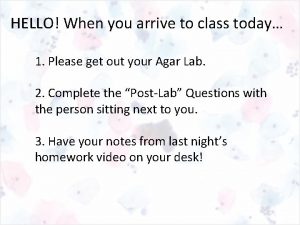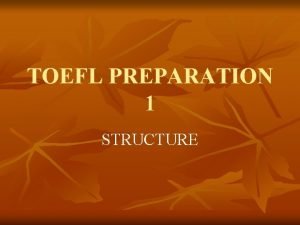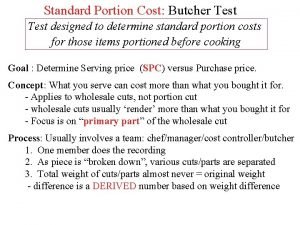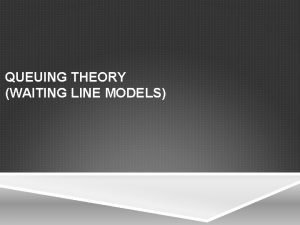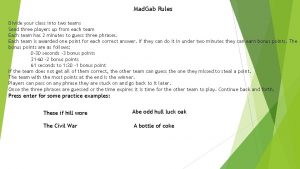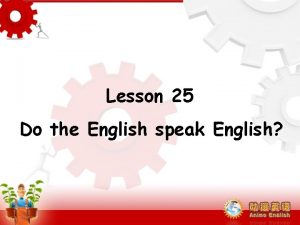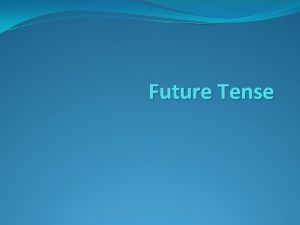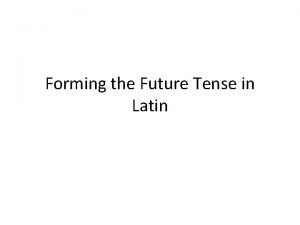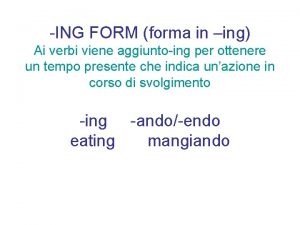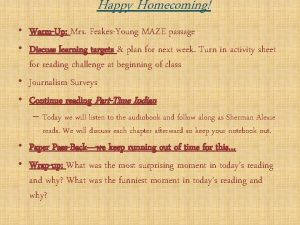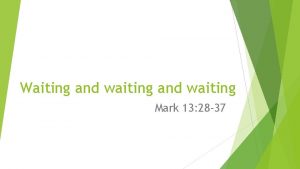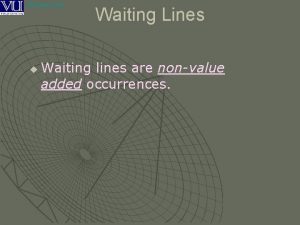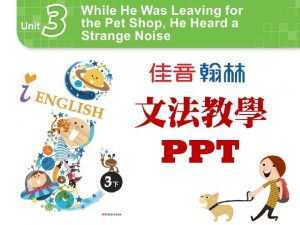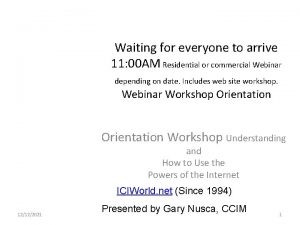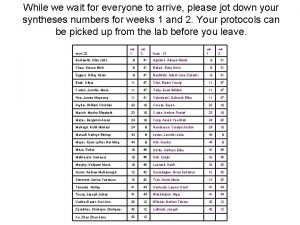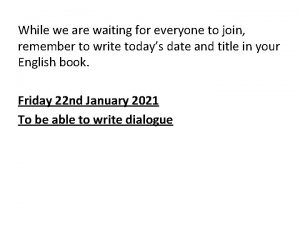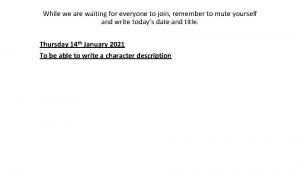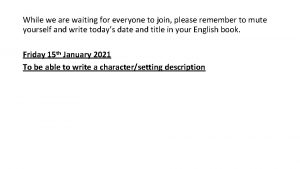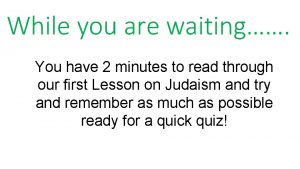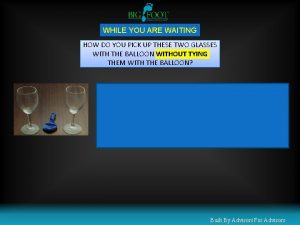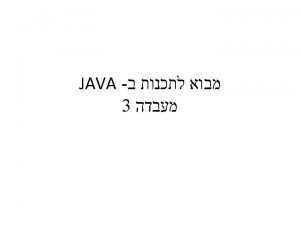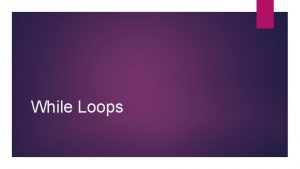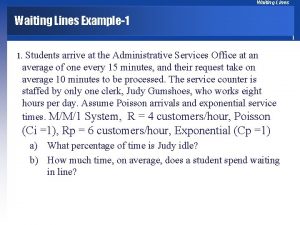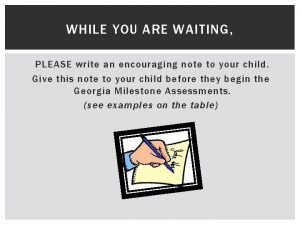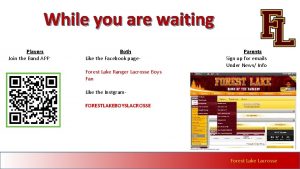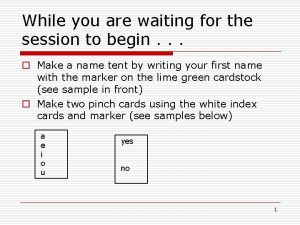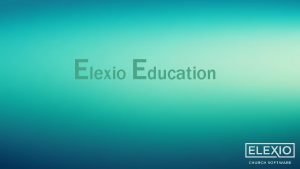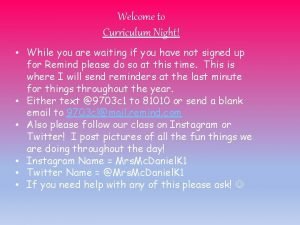While you are waiting for everyone to arrive


































- Slides: 34

While you are waiting for everyone to arrive, please complete the YELLOW Teacher Self-Assessment

Use Keys for Success to Differentiate Instruction Lowell High School Jacque Melin Grand Valley State University melinj@gvsu. edu www. formativedifferentiated. com

Targets for this Workshop • I can establish or extend my understanding of differentiated instruction. • I can articulate a vision with fellow teachers as to what is means to differentiate instruction for students in our schools. – We must remember that excellent differentiated classrooms are excellent first and differentiated second. – Anonymous

Targets for this Workshop • I can use a variety of instructional strategies in order to effectively differentiate instruction. – This seems simple enough, but surprisingly enough many educators are so determined to “get through” the curriculum that they neglect the more important challenge of “getting through” to the students. -Taylor Ranch School’s Journey Towards Excellence

Targets for this Workshop • I can proactively plan instruction that is responsive to student differences. – Differentiated instruction is more anticipatory than reactive in nature. So really teachers should ask, “Am I planning for student differences or am I simply reacting to student failures? ” -Taylor Ranch School’s Journey Towards Excellence

Key Underlying Principles 1. Knowing the Learner 2. Responding by Differentiating assessment for learning Readiness Interests Learning Profile (e. g. , styles, intelligences, environmental Content (learning materials) Process (how we help students learn) Product (how students demonstrate their learning) Learning Environment (conditions for learning)

Know the Student – A resource from Solution Tree http: //www. solutiontree. com/freeresources/RTIat. Work


On-line Inventories • Visual Auditory Kinesthetic • http: //teachertools. londongt. org/? page=VAK • Multiple Intelligences • http: //www. edutopia. org/multiple-intelligences-assessment • http: //www. literacynet. org/mi/assessment/findyourstrengths. html • Creative Analytical Practical • http: //plp. eleducation. org/learning-styles/ http: //www. beta. edugains. ca/newsite/di 2 /secondarydvdvideo. html

Differentiated Instruction: teaching in a way to meet the needs of all students with differing abilities in the same class (special needs to gifted). Teachers plan and implement a variety of approaches to: content, process, and product According to students’ readiness levels, interests, and learning profiles

Differentiated Instruction: teaching in a way to meet the needs of all students with differing abilities in the same class (special needs to gifted). Teachers plan and implement a variety of approaches to: content, process, and product According to students’ readiness levels, interests, and learning profiles Accommodations: • actual teaching supports and services that special education students may require to successfully demonstrate learning • intended to reduce or eliminate the effects of a student's disability • do not decrease learning expectations • are noted on a student's Individualized Educational Plan (IEP). • Examples: taped books, math charts of the times tables, additional time, oral vs written quizzes and tests, preferred seating, and adapted keyboards.

Differentiated Instruction: teaching in a way to meet the needs of all students with differing abilities in the same class (special needs to gifted). Teachers plan and implement a variety of approaches to: content, process, and product According to students’ readiness levels, interests, and learning profiles Accommodations: • actual teaching supports and services that special education students may require to successfully demonstrate learning • intended to reduce or eliminate the effects of a student's disability • do not decrease learning expectations • are noted on a student's Individualized Educational Plan (IEP). • Examples: taped books, math charts of the times tables, additional time, oral vs written quizzes and tests, preferred seating, and adapted keyboards. Modifications: • changes made to curriculum expectations in order to meet the needs of the special needs student • made when the expectations are beyond the student’s level of ability • may be minimal or very complex depending on the student’s learning needs • must be clearly acknowledged in the IEP.

Differentiated Instruction: teaching in a way to meet the needs of all students with differing abilities in the same class (special needs to gifted). Teachers plan and implement a variety of approaches to: content, process, and product According to students’ readiness levels, interests, and learning profiles

Differentiated Instruction: teaching in a way to meet the needs of all students with differing abilities in the same class (special needs to gifted). Teachers plan and implement a variety of approaches to: content, process, and product According to students’ readiness levels, interests, and learning profiles Enrichments • "learning activities providing depth and breadth to regular teaching according to the child's abilities and needs“ • are normally in addition to and different from the regular classroom activities by way of offering challenge.

Differentiated Instruction: teaching in a way to meet the needs of all students with differing abilities in the same class (special needs to gifted). Teachers plan and implement a variety of approaches to: content, process, and product According to students’ readiness levels, interests, and learning profiles Enrichments • "learning activities providing depth and breadth to regular teaching according to the child's abilities and needs“ • are normally in addition to and different from the regular classroom activities by way of offering challenge. Acceleration: • instruction that aligns gifted and talented students' abilities and learning needs more closely to the curriculum. • "In practice, acceleration occurs when children are exposed to new content at an earlier age than other children or when they cover the same content in less time (curriculum compacting). ”

Scaffolding: Using a variety of instructional techniques to move students progressively toward stronger understanding and, ultimately, greater independence in the learning process. Common Scaffolding Strategies: • students get a simplified version of a lesson, etc. and then complexity, difficulty, or sophistication is increased over time • teacher describes or illustrates a concept, problem, or process in multiple ways to ensure understanding • students are given a vocabulary lesson before they read a difficult text

“Even though students may learn in many ways, the essential skills and content they learn can remain steady. Students can take different roads to the same destination. ” – Carol Ann Tomlinson What IS/IS NOT Differentiated Instruction?

Key Features of a DI Classroom • Flexible grouping • Choice • Respectful tasks based on curriculum • Shared Responsibility for Learning 18

Looking for DI Before Viewing With an “elbow partner”…… • Each select two key features to explore (so that you are observing for all 4 key features) Individually • Read about your key feature: – Pages : KEY FEATURES 19

Video Segment During Viewing • Record evidence of your key feature on the Looking for DI Handout After Viewing • Explain your key feature to your partner and share your evidence SS/L-18 ITEB 2010 Differentiated Instruction Summer Program

View Video http: //www. beta. edugains. ca/newsite/di 2/secondaryd vdvideo. html 21

Learning Menus Kinds of Menus (to name a few): MENU: Main Dishes, Side Dishes, and Desserts AGENDA: Imperatives, Negotiables, and Options LEARNING PROFILE: People, Things, Data THINK TAC TOE or TIC TAC TOE: Complete a row, column or diagonal line of activities.

Long Term Anchor Tic Tac Toe Basic More challenging Basic More challenging Basic In this class we are never finished. Learning is a process that never ends. ” - Carol Ann Tomlinson

Management and Monitoring of Learning Menus (Things to consider) • Expectations: When do you expect students to work on this? • Due date: How much time do you want it to take? Will there be checkpoint due dates along the way? • Points and/or rubric: What is the activity worth as a grade? Do you want to grade them or just give credit? • Accountability: What’s collected? Where does finished work go? What is checked by the teacher? the students?

Additional Implementation Suggestions: • Go over the entire learning menu with the class. • If you are grading these, go over the scoring guide with everyone and make sure they all understand the expectations. • Give each student a copy of the (choice board; menu) and scoring guide to keep in their binders so they have easy access to this when they need it. • Point out where materials will be kept. • Be clear on expectations. • Let students know if any of the activities can be done as homework or if they are all meant to be done in class.

Mitosis and Meiosis DNA and RNA Genetic Diseases & Disorders Prepare a 15 question quiz with answers about the vocabulary for the chapter on mitosis and meiosis. Questions could be multiple choice, matching, true/false or fill-in. Include an answer key. Quizlet A publishing company has asked you to write a creative children’s book that explains at least 15 vocabulary words about DNA and RNA to 4 th graders. Create a brochure for a doctor’s office waiting room that explains at least 15 important things from the chapters about genetic diseases & disorders. Create a comic book where the action figures explain at least 15 important key points about mitosis and meiosis. Strip Design or Make. Beliefs Comix Create a crossword puzzle using at least 15 vocabulary words from the chapters on DNA and RNA. Write clues for each word. Instant Crossword Puzzle Maker Publisher Storybird Compose a poem using at least Create a Power. Point or Prezi 15 vocabulary words from the presentation that would explain chapters on mitosis and at least 15 vocabulary words meiosis. Have your avatar about DNA and RNA. read your poem. Power. Point or Prezi Go. Animate Design a poster that explains and illustrates at least 15 vocabulary words from the chapters on genetic diseases and disorders. Glogster Write a newspaper article for the GR Press that explains at least 15 key points about genetic diseases and disorders. Word or Google Docs

R. A. F. T. • …is a creative strategy that encourages writing across the curriculum. • …a way to encourage students to… – …assume a role – …consider their audience, while – …examine a topic from their chosen perspective, and – …writing in a particular format • Can serve as a motivator by giving students choice, appealing to their interests and learning profiles, and adapting to student readiness levels. • Can be used as introductory “hooks” into a unit of study or for assessment purposes (as seen in the science example on handout) • OPTIONS WHEN USING RAFTS: Keep one column consistent while varying the other columns in the RAFT grid; Can be created by the students or incorporate a blank row for that option

Triarchic or Trimind • CREATIVE • ANALYTICAL • PRACTICAL

How to Create a PROFILER Assignment • Examples of intelligence preferences and associated jobs/occupations • Visual-Spatial – Artist, Cartoonist, Magazine layout editor • Logical-Mathematical – Architect, Engineer, Mathematician • Interpersonal – Counselor, Tour Guide, Teacher • Musical/Rhythmic – Songwriter, Performing Artist • Verbal-Linguistic – Writer, Commentator, Announcer • Bodily-Kinesthetic – Actor, Builder • Intrapersonal – Poet, Songwriter

Show and Tell Choice Board

Tiny events can disrupt a pattern.

Proactively Planning with Differentiation in Mind Plan with the Key Features of Differentiation in mind…. • Flexible grouping (F) • Choice (C) • Respectful tasks based on curriculum (R) • Shared Responsibility for Learning (S)

EXIT CARD • Armed with all of the information from this workshop, what are YOUR next steps?

 Antigentest åre
Antigentest åre Good afternoon hope you are doing well
Good afternoon hope you are doing well What time did you arrive in class today
What time did you arrive in class today Pernyataan do while
Pernyataan do while Skill 17 present participles and past participle after be
Skill 17 present participles and past participle after be Standard portion cost
Standard portion cost Waiting line model
Waiting line model Wand her womb hen
Wand her womb hen In this graphic if both cars arrive at the same time
In this graphic if both cars arrive at the same time Where did the writer arrive
Where did the writer arrive Simple future tense take
Simple future tense take Tense
Tense Arrive
Arrive Forma in ing
Forma in ing : english class rule -....... don’t forget
: english class rule -....... don’t forget Who is the first person to arrive at juliet's tomb?
Who is the first person to arrive at juliet's tomb? What realisations does junior arrive at
What realisations does junior arrive at Phone calls arrive at the rate of 48
Phone calls arrive at the rate of 48 You need a new winter coat tag questions
You need a new winter coat tag questions Hello everyone nice to meet you
Hello everyone nice to meet you Joining us today
Joining us today Hello everyone i hope you all are doing well
Hello everyone i hope you all are doing well Greeting nice to meet you
Greeting nice to meet you Nice to meet you everyone
Nice to meet you everyone Morning jobs
Morning jobs Iso 22301 utbildning
Iso 22301 utbildning Novell typiska drag
Novell typiska drag Tack för att ni lyssnade bild
Tack för att ni lyssnade bild Returpilarna
Returpilarna Varför kallas perioden 1918-1939 för mellankrigstiden?
Varför kallas perioden 1918-1939 för mellankrigstiden? En lathund för arbete med kontinuitetshantering
En lathund för arbete med kontinuitetshantering Personalliggare bygg undantag
Personalliggare bygg undantag Personlig tidbok fylla i
Personlig tidbok fylla i Anatomi organ reproduksi
Anatomi organ reproduksi Vad är densitet
Vad är densitet


